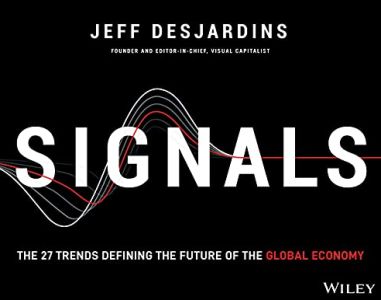Join getAbstract to access the summary!

Join getAbstract to access the summary!
Jeff Desjardins
Signals
The 27 Trends Defining the Future of the Global Economy
Wiley, 2021
What's inside?
If a picture is worth a thousand words, so is a sharp data visualization.
Recommendation
Global economies and societies are changing quickly – so quickly, in fact, that the standard format of a book filled with words might not help readers make sense of it all. That’s the idea behind this work, which compiles hundreds of data visualizations about more than two dozen broad topics of interest to managers, employees and investors. Jeff Desjardins runs a media site that creates graphics that are at once elegant, dynamic and illuminating, and they illustrate a variety of trends, including population shifts, climate change and wealth inequality. Consider this a graphic novel about global economics.
Summary
About the Author
Jeff Desjardins is the founder and editor-in-chief of Visual Capitalist, a digital media site that creates data-driven visual content focused on global trends, investing, technology and the economy.





















Comment on this summary